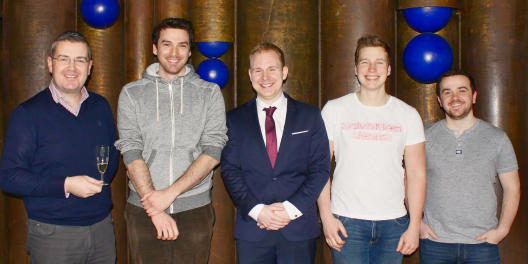New building blocks for drug discovery

To make drug candidates more specific and effective, chemists often incorporate the element fluorine in the structure. This makes drugs, for example, more resistant to degradation and helps tune their performance. Around thirty percent of active pharmaceutical ingredients in existence today – including those found in agricultural chemicals – have at least one fluorine atom in their molecular structure. What is needed, though, are simple and selective methods to directly add fluorine to complex molecules in an efficient and controlled manner. Now, chemists at the University of Münster have found a new way of doing this. For the first time, they have succeeded in introducing two fluorine atoms in a molecule in a spatially defined manner – that is, on two adjacent carbon atoms. For this purpose, they used a new catalyst, a substance which makes the reaction possible and is recoverable. “Our method is very efficient, and it provides a solution to a very long standing problem in organic chemistry,” says Ryan Gilmour, professor at the Cells-in-Motion Cluster of Excellence and head of the study. In future, these results may be valuable in the design and development of drugs and materials. The study has been published in the journal “Angewandte Chemie”.
Background information:
Generally, chemists introduce a single fluorine atom to a compound by exchanging one existing substituent with a fluorine substituent. Since elemental fluorine is hazardous and rarely found in Nature, fluorinating reagents or catalysis to generate carbon fluorine bonds are urgently required. Since the use of traditional fluorinating reagents is less sustainable than catalysis strategies, chemists continue to search for more direct methods of fluorinating molecules. Of course, the simultaneous introduction of two atoms renders this process more challenging.
This problem is made more complex by the fact that fluorine introduction to a carbon atom can give rise to mirror images, or enantiomers. These two forms that are related by a mirror plane are referred to as “chiral”. Chiral molecules feature very prominently in medicine with one “enantiomer” often having a different biological activity to the opposite one. When introducing fluorine atoms, the Münster group were able to control formation of one enantiomer over the other in a selective manner by designing a new catalyst.
“This system enables us to modify the three-dimensional spatial structure of the molecule, proceeding from a simple starting material, and to control the physical and chemical properties of the compound much better,” says Ryan Gilmour. As the resulting fluorinated ethyl group behaves in a similar way to a substance which is commonly used in drug discovery, this new compound might be able to play a valuable role there in future.
Funding:
The study received financial support from the Cells-in-Motion Cluster of Excellence at the University of Münster, as well as from the German Research Foundation’s Collaborative Research Centre 858 “Synergistic Effects in Chemistry” at Münster University, and from the European Research Council (ERC Starter and Consolidator Grants).
Original Publikation:
Scheidt F, Schäfer M, Sarie JC, Daniliuc CG, Molloy JJ, Gilmour R. Enantioselective, Catalytic Vicinal Difluorination of Alkenes. Angew Chem Int Ed Engl 2018;57: 16431-16435. Abstract

